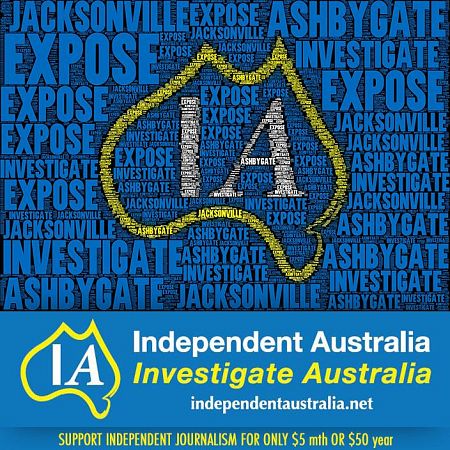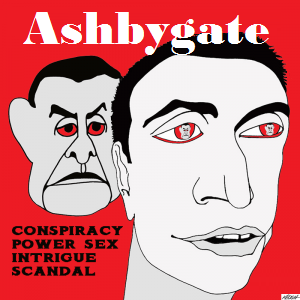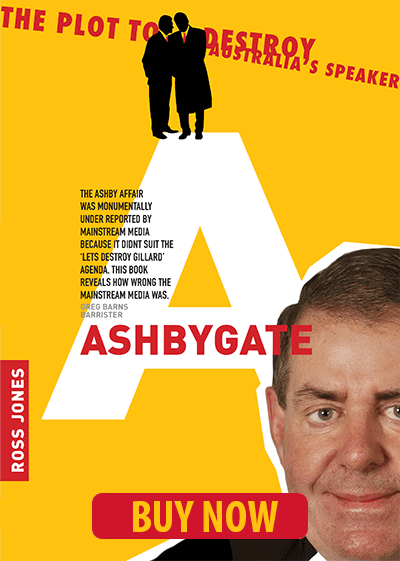The Battle of Beersheba was much more than just an heroic charge. Managing editor David Donovan, whose grandfather was there, provides a fuller account of the famous Battle than the two-dimensional tales you may have been reading.
THIS WEEK, Australians have been remembering the exploits of the Australian Light Horse on the 100th anniversary of the Battle of Beersheba, which took place on 31 October 1917. This Battle is of some significance to me, as two members of my family took part.
My grandfather Albert William “A.W.” Donovan and his brother, my great-uncle Walter Henry “W.H.” Donovan ‒ farm boys from around Stanthorpe ‒ both joined the 11th Light Horse Regiment during the early part of World War I. The 11th took its numbers from the Darling Downs and South Australia, and had a key role in the Battle of Beersheba, though was not in the famous charge. It was later to distinguish itself in another historic cavalry charge, in the decisive Battle of Samakh, on 25 September 1918, where my grandfather played a notable part. At Beersheba for the charge, however, positioned in the hills around the town, the 11th Light Horse had the best seats in the house.
It has been said that war is long periods of extreme boredom, punctuated by moments of extreme terror. The book the History of the 11th Light Horse Regiment, written by Signal Sergeant Ernest W. Hammond, at the behest and with the assistance of the men who fought ‒ and not the top brass ‒ bears this out, providing a frank, thrilling, frightening and often amusing account of the actual conditions the Light Horsemen fought under. The trudging and scouting, the hunger and thirst, the camaraderie and tomfoolery, the skirmishes, fighting, injury, tragedy and loss — including of the trooper’s brave and beloved horses.
The following excerpts from Hammond’s book have been selected to provide a fuller account of the famous battle than the two-dimensional Hollywood tales of heroism and glory you may have been reading over the past few days.
From the History of the 11th Light Horse Regiment, Fourth Light Horse Brigade, Australian Imperial Forces, war 1914-1919, (Brisbane: William Brooks & Co., 1942), by E.W. Hammond (very slightly edited for style):
CLOSE ESCAPE SCOUTING IN SHANAG
On 1st May [1917], the Regiment moved out to patrol enemy territory in the vicinity of Shanag [near Wadi Guzze, south of Gaza], and troops under Lieuts Stumm and Gordon gained touch with enemy patrols, who retired after a brief engagement. Late that afternoon Lieut. W. Moyle, accompanied by Troopers Donovan* and Burgess rode forward to reconnoitre the enemy position and narrowly escaped being captured.

They had ridden across a plain and were ascending a small hill to gain a view of the surrounding country when they heard the pounding of hoofs, and on looking down they saw two troops of Turkish cavalry racing around the sides of the hill to cut off their retreat. Putting spurs to their horses, they galloped down the hill and on across the plain, averting capture by a margin of yards.
This thrilling incident was witnessed by the whole regiment, which was some distance away, and for a time the onlookers thought Lieut. Moyle and his two comrades would be captured, but when pursuers and pursued came on to the plain country the sturdy Australian horses drew away from the Turkish ponies and the enemy drew rein and retired.
The pursuers were armed with swords and lances, but apparently had no firearms, although a number of Turkish infantry men were seen kneeling at the foot of the hill and firing at the Australians as they marched away. Fortunately, none of the them was hit, and all are agreed that Lieut. Moyle and his scouts, Donovan and Burgess, owed their freedom to their individual courage, their good horsemanship and the gameness of their horses.
THE DRY RIDE TO BEERSHEBA — A PEBBLE AND A BRICK
On October 28th [1917], the 11th Light Horse Regiment, 470 strong, moved from Tel el Fara with the 4th [Light Horse] Brigade on the first stage of its ride to encircle Beersheba. That night we camped at Esani, and the following day proceeded to Khalasa, a small village which stands on the site of the ancient city of Eleusa [23 kilometres southwest of Beersheba]. We rested here during the afternoon, and, at nightfall, moved off on the final stage of our movement to take up a position within striking distance of Beersheba.

The ride from Khalasa that night will long be remembered by the 11th Regiment. The night was hot and oppressive, and great billows of heavy dust rolled through the ranks of plodding horses and clung to the column in a dense cloud as it moved slowly across the lowlands south of Beersheba. We filled our water bottles at Khalasa, but, in view of the conditions ahead of us, known and unknown, we were exhorted to conserve this meagre supply at all costs and by all means in our power. By midnight, both men and horses were showing the need of water, and, with the wells of Khalasa far behind us, the nearest wells now lay behind the defences of Beersheba, in the heart of the town.
Soon after midnight, our O.C., Colonel Parsons D.S.O., drew out from his position at the head of the column, exchanging a word here and there with the tired troopers as they rode along. One section of men of “C” Squadron were discussing the “shortage of water” in terms that left nothing to the imagination, when the Colonel interrupted them.
“You fellows should copy my example,” he said. “For the past ten miles, I have carried a small pebble in my mouth, and I haven’t felt the need of a drink of water.”
For a moment, this well-meant advice from the C.O. was met by a “stony” silence, but, as he rode off into the darkness, a wag in the troop called out in a hoarse and croaky voice:
“If the Colonel can travel for ten miles without a drink on one small pebble, how far will he go on half a brick?”
Colonel Parsons, not yet out of earshot, joined in the general laughter that followed.

PRELUDE TO A CHARGE: CHAUVEL’S QUANDARY
As the afternoon [of 30 October 1917] wore on, the position became serious. The outer defences of Beersheba had not fallen to our attacks and the mounted troops could endure another night without water. Occasionally, as we worked onto the high ground, we could see the town of Beersheba lying in a saucer shaped dip at the foot of the Judean hills. A barren treeless plain sloped easily down to the town four miles away. It was too far off to permit an organised dismounted attack before darkness set in, and with every moment that passed the position became more critical.
Earlier in the day, General [Harry] Chauvel had established his headquarters on a slight rise some distance in our rear, in the vicinity of Khashm Zana, and here, as the afternoon waned, a tense military drama of tremendous importance was being enacted. General Chauvel had just made up his mind that a galloping charge was his only hope of saving the day.
With him were General [Henry] Hodgson, [commander of the Imperial Mounted Division], Brigadier-General [William] Grant, of the 4th Australian Brigade, and Brigadier-General [Percy] Fitzgerald, of the 5th Imperial Mounted Yeomanry Brigade. Generals Grant and Fitzgerald both pleaded with their leader for the honour of the charge. Those few moments, made tense by a desperate situation, must rightly occupy a place amongst “the most memorable moments of history.”
General Chauvel had always tried to remain impartial in his treatment of the Australian and Imperial horsemen under his charge, and for an instant remained silent, showing no outward sign of the conflict taking place within him.
Turning quietly to General Hodgson, he settled the matter in one swift, crisp sentence: “Put Grant straight at it,” he exclaimed.

THE CHARGE OF THE 4TH AND 12TH LIGHT HORSE
At 4.30am, the first line of Australian horsemen went over the ridge at a trot which soon developed into a hard gallop, as the troopers, with bayonets flashing in their hands, warmed to the occasion and spurred their mounts onwards. A second and third line followed at intervals of 300 yards, and, ere long, the great plain echoed to the beat of a thousand horses.
A handful of picked horsemen, acting as ground scouts, raced ahead of the main body, eyes alert for the first signs of barbed wire, but, fortunately, the Turks had thrown up no wire entanglements around the trenches in that area.
The enemy opened fire with shrapnel, which burst in white puffs over the galloping lines. As the horsemen neared the first line of trenches, they came under the fire of machine guns and rifles, but, without checking their speed, they swept across the Turkish defences. Some of the men dismounted and went to work with rifle and bayonet, while others raced on to the town, chasing the Turks into the hills beyond. In one brief, glorious hour, the Turks left flank was shattered, and Beersheba was ours.
The spectacle of the Light Horsemen, with bayonets in hands, charging infantrymen in strongly entrenched positions, was something quite unique in the history of warfare in any period, and the boldness of the charge and its unparalleled success, fired the imagination of the British peoples. The newspapers in England, Australia and America flashed the news around the world in bold headlines.
MOPPING UP — GERMAN COGNAC AND TURKISH GOLD

The 11th Regiment captured 400 prisoners and a great quantity of booty. Some of the Germans and Turks who were rooted out of dugouts and buildings resisted, and there were a few isolated “scraps”, which invariably ended in our favour.
We found loaves of coarse Turkish bread, tins of poor quality coffee, and dried apricots and dates and figs. There was an almost unlimited supply of Turkish paper money, which, alas, had no intrinsic value for the British troops, but it was rumoured that a troop of one Regiment found a quantity of Turkish gold.

A sergeant of the 11th Regiment discovered a canvas bag filled with Turkish war medals, including many Gallipoli Stars (a medal struck by the Turkish War Ministry to celebrate Gallipoli [pictured right]), which he shared amongst his mates.
In another part of town, a liberal stock of cognac and red and white wine was unearthed, but, before an officer who had heard of its discovery could place a guard over it, the find had vanished. This officer afterwards said he never saw anything disappear so quickly or so completely.
He admitted that he got a bottle of cognac out of it himself, but added, somewhat ruefully:
“I had to buy it from a Digger who was in the early rush. It cost me five ‘bob’.”
There was the usual crop of humorous incidents which invariably followed in the wake of the Australians.
About midnight, a Digger staggered into our lines, a bottle of cognac in each hand, a rollicking song on his lips, and with the front of his tunic glittering with a score of Turkish war medals pinned closely together. In a loud, thick voice, punctuated with hiccoughs, he insisted that the Sergeant-Major should come out of his bed and salute him, but, to his everlasting disgust, an unsympathetic sergeant of the guard threw him in the guard tent to keep him out of further mischief.
Later that night, another wag rolled into our lines and wakened his companions for the purpose, as he expressed it, of declaring himself a “Turkish millionaire”, and lest anyone should doubt his assertion, he emptied a feed-bag of Turkish bank notes by the side of the fire, and, throwing himself down on his mountain of money, fell fast asleep.

A.W. Donovan pictured in the Queenslander Pictorial (a supplement to The Queenslander) after enlisting in 1915 (via discoveringanzacs.naa.gov.au)
* The Trooper Donovan referred to in the heart-stopping first anecdote, from the long lead-up to the famous Battle, was either A.W. or W.H., as the brothers, both gun horsemen, were the only two Donovans in the 11th Light Horse.
You can follow managing editor Dave Donovan on Twitter @davrosz.

This work is licensed under a Creative Commons Attribution-NonCommercial-NoDerivs 3.0 Australia License
Monthly Donation
Single Donation
Be brave. Subscribe to IA.











